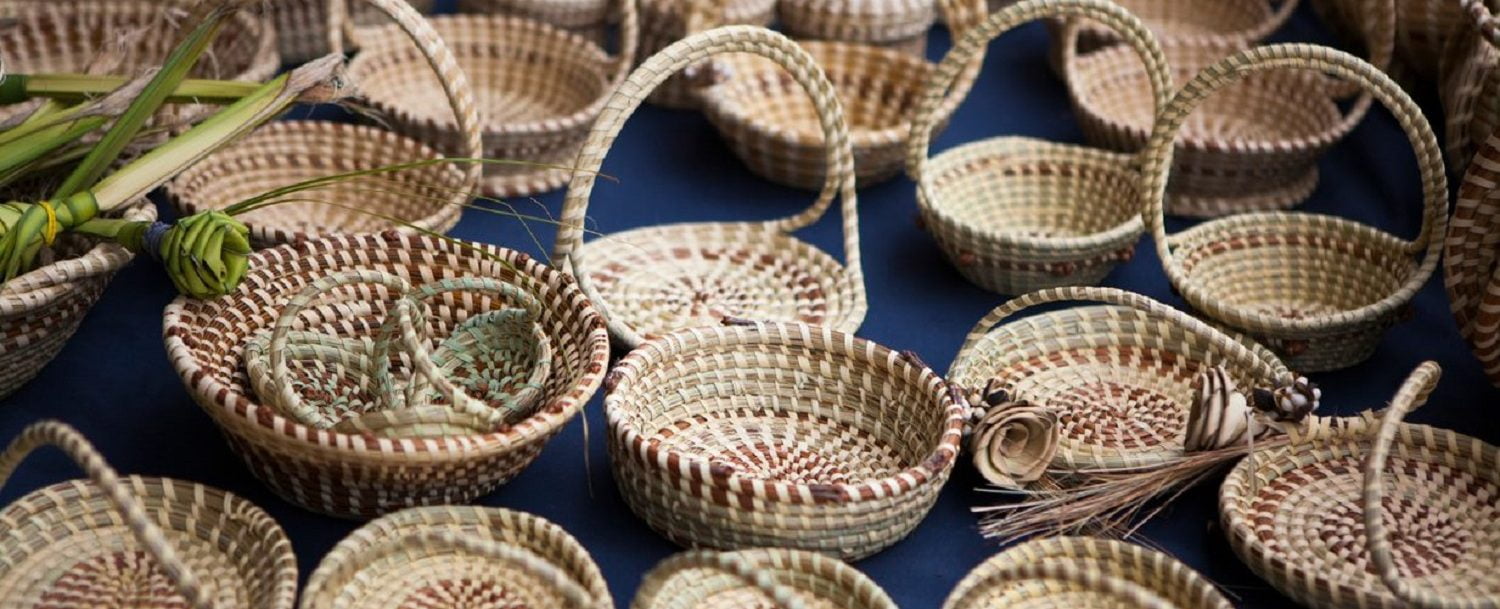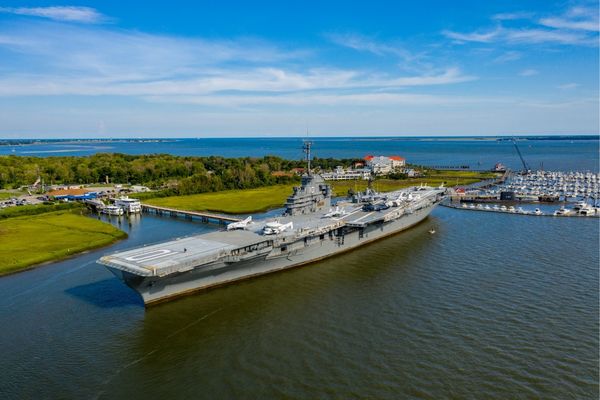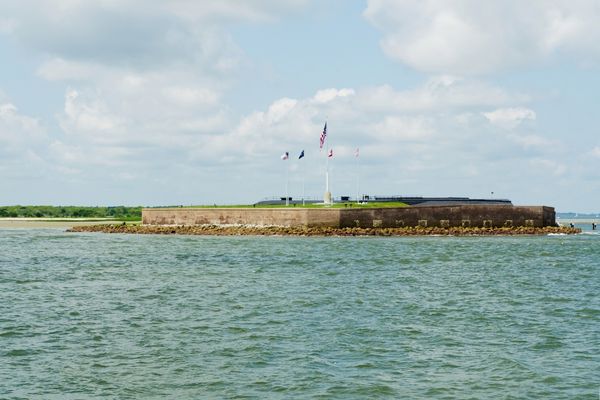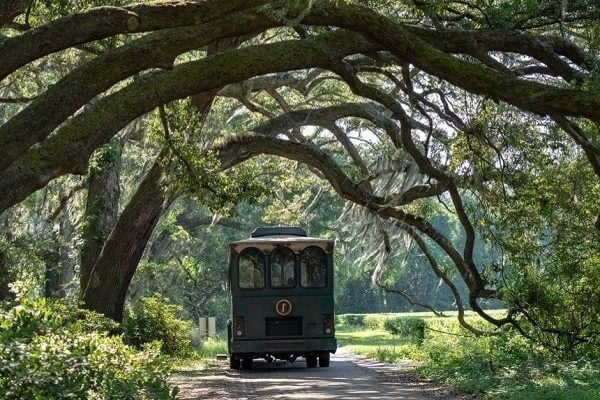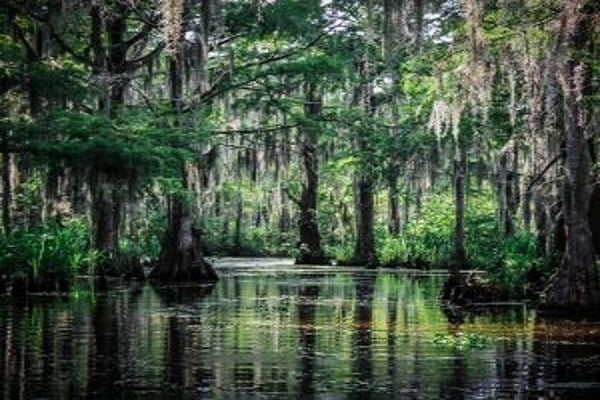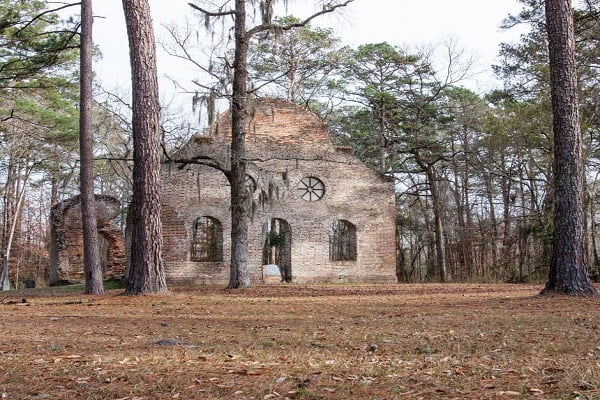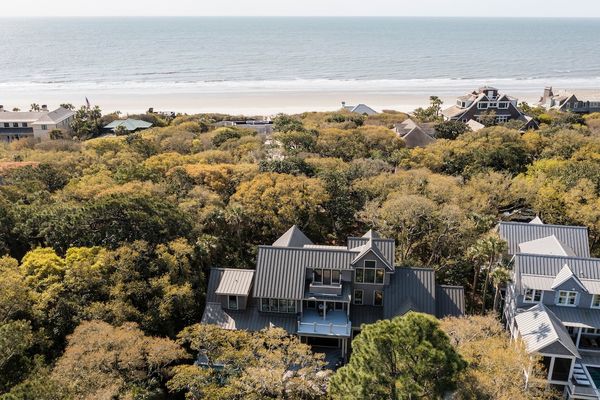Are you ready to step foot into one of the most historic cities in the United States? Charleston is also known as the Holy City, and it’s no wonder why. Historic churches and colorful Antebellum homes decorate almost every corner of our city. Many of these historically significant buildings withstood hurricanes and civil wars, and today, you can visit these famous historical sites in Charleston, SC.
Immerse yourself in history as you explore plantations, admire towering oak trees, and stroll cobblestone streets. Read on to find out how you can see the places that shaped Charleston’s culture.
To further elevate your history-inspired vacation, open your free guide to the Sea Islands. Kiawah Island and Seabrook Island are highlighted in the guide and you’ll find expert recommendations for exploring the sea islands. Experiencing the best of the Lowcountry couldn’t be easier!
7 Charleston SC Historic Sites That Shaped the Lowcountry
1. The USS Yorktown at Patriot’s Point | Mount Pleasant
The USS Yorktown is a popular Lowcountry attraction that’s a must for any history buff! Visit this aircraft carrier that was built for the U.S. Navy during WWII.
Nicknamed “The Fighting Lady,” the Yorktown served in WWII, the Vietnam War, and even recovered the Apollo 8 space capsule after it returned from the first trip around the moon!
Visit the museum inside and then head to the deck to see impressive aircrafts.
Make sure to take pictures because the planes are all perched in front of the stunning Charleston Harbor and with the Ravenel Bridge as a backdrop.
2. Fort Sumter | Charleston
Just across the harbor from the Yorktown is Fort Sumter. This historic site played a major role in the Civil War as the spot where the first shots were fired.
Fort Sumter also protected Charleston from naval invasion.
Today, the only way to get to this national historic landmark is by boat; you can take a ferry ride from Patriots Point or Liberty Square Education Visitor Center.
3. Charleston Tea Plantation | Wadmalaw Island
Charleston Tea Plantation, now called the Charleston Tea Garden is only four minutes away from the Rockville Church, which is also a fascinating historical site to visit.
You may have heard of Summerville, South Carolina, as the birthplace of sweet tea, and we’re here to explain why!
During the late 19th century, Dr. Charles Shepard founded the Pinehurst Tea Plantation of Summerville, where he created sweet tea.
It was love at first sip. To this day, it’s the beverage that the South can’t do without.
4. Magnolia Plantation & Gardens | West Ashley
People often ask which plantation is best. A trip to Magnolia Plantation & Gardens has the power to enhance every aspect of your Charleston experience. It is important to understand the history of Charleston and honor those who unwillingly contributed to the grandeur of the Lowcountry. For that reason, we recommend visiting before your journey downtown. Magnolia honors all its inhabitants and those who build and worked it. The Drayton Family purchased the plantation land in 1676, making it the oldest public garden in America!
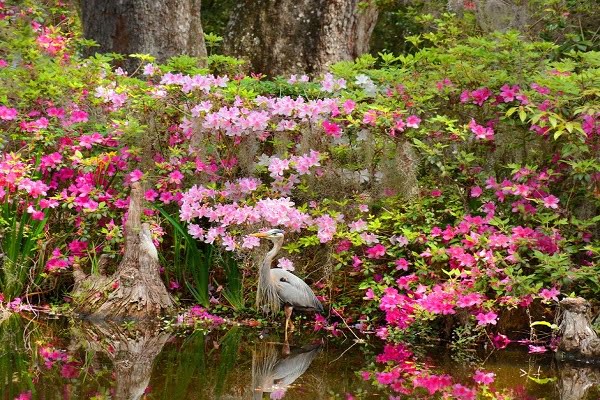
It’s incredible that the home, gardens, and stunning scenery are still with us more than 300 years later, but the historians and tour guides are what make Magnolia Plantation stand out from the rest.
On the Slavery to Freedom Tour, you will find five historic slave dwellings that date back to 1850.
The physical and emotional aspects of slavery are tragic, and while many tour guides avoid broaching the subject, Magnolia Plantation & Gardens respectfully affords credit where it is due. The legacies of the Gullah people are everywhere in downtown Charleston.
Soul food, sweetgrass baskets, and vibrant folktales are only a handful of examples. If you'd like to learn more about the Gullah Geechee culture and heritage, visit the National Heritage Area on Johns Island
5. Cypress Gardens | Moncks Corner
Cypress Gardens is the only garden of its kind in the South Carolina Lowcountry. Once you step foot on the property, towering trees, flourishing fauna, and breathtaking wildlife welcome you. If you are feeling adventurous, take a boat tour through the swamp!
You might recognize this area from the iconic rowboat scene in The Notebook.
As you investigate the marshy land, keep in mind that these gardens were once home to Dean Hall Rice Plantation.
The swampy layout of the land was perfect for growing this Lowcountry staple. Truly, Charleston as we know it wouldn't be here without rice.
Have you noticed that many of the Lowcountry’s most prominent dishes are made from rice? Charleston red rice and Hoppin’ John are just two legendary Gullah dishes that the Lowcountry enjoys today. You must try at least one rice dish during your visit to Charleston. It’s part of the experience!
6. Rockville Church | Wadmalaw Island
Since you’re vacationing on the sea islands, it only makes sense to show you a few nearby places on Wadmalaw Island. In the early 1800s, “Rockville” was an up-and-coming summer resort.
The Rockville Church was built shortly after the resort’s establishment in 1850.
It’s a beautiful example of Charleston architecture made to last through thick and thin: humidity, salty air, summer heat, and all. The church remains active today.
After your visit to the church, cool down with a visit to Charleston Tea Plantation, the only tea plantation in the United States! After all, what’s a Lowcountry vacation without some sweet tea?
7. Botany Bay | Edisto Island
There is no place in the world like Botany Bay Plantation. This stunning wildlife preserve is only one hour from Kiawah and Seabrook, and the drive is stunning.
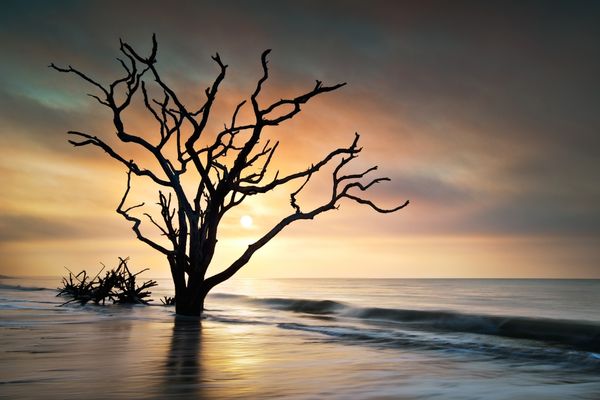
The preserve encompasses over 3,300 acres of ancient, towering trees, untouched scenery, and history.
Botany Bay was once home to two plantations in the late 18th and early 19th centuries. During the 1850s, more cotton came from Sea Cloud Plantation than any other plantation in South Carolina.
Did You Know? The namesake of Edisto Island comes from the area’s first people, the Edisto Indians. Near the Edisto River, you’ll also find one of its tributary rivers, Four Holes Swamp.
Here, many Native American tribes made their homes with other freed people of color. If you’d like to learn more about the island’s history, visit The Edisto Island Museum.
When It’s Time to Set Your Mind to Rest After Exploring Charleston’s History
If our Charleston history guide has you longing for your next history-inspired getaway, there isn’t a better place to stay than on Kiawah or Seabrook Island.
After exploring the best historical sites in Charleston, SC, you can relax by enjoying lazy, sun-soaked days on the water, sitting beneath the shaded oaks, and enjoying soulful culinary dishes that have been passed down for generations.
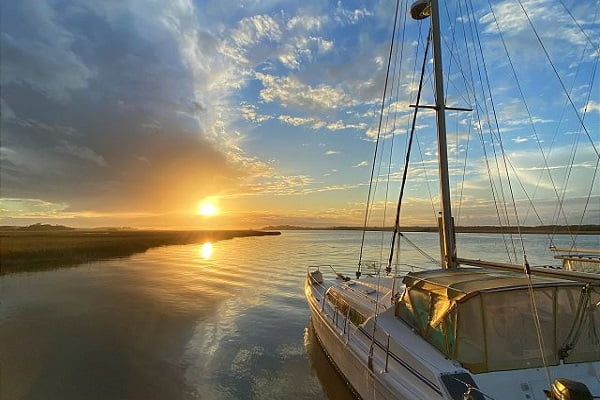
Find the Lowcountry Home of Your Dreams Just Minutes from Downtown Charleston!
Kiawah and Seabrook Islands are ideal destinations for you to experience the best of the Lowcountry. Here we have stunning natural landscapes and private and secluded communities that are just a short drive away from the wonderful activities and events in Charleston.
Consider these beautiful barrier islands whether you’re looking for a new place to make your permanent home or you’re ready to make your vacation home dreams a reality.
Pam Harrington Exclusives represents a variety of exceptional properties for sale on Kiawah and Seabrook Island, as well as in other areas of the Lowcountry.
Browse our available properties online today. Then, contact us to schedule a showing at a few of your favorites!
